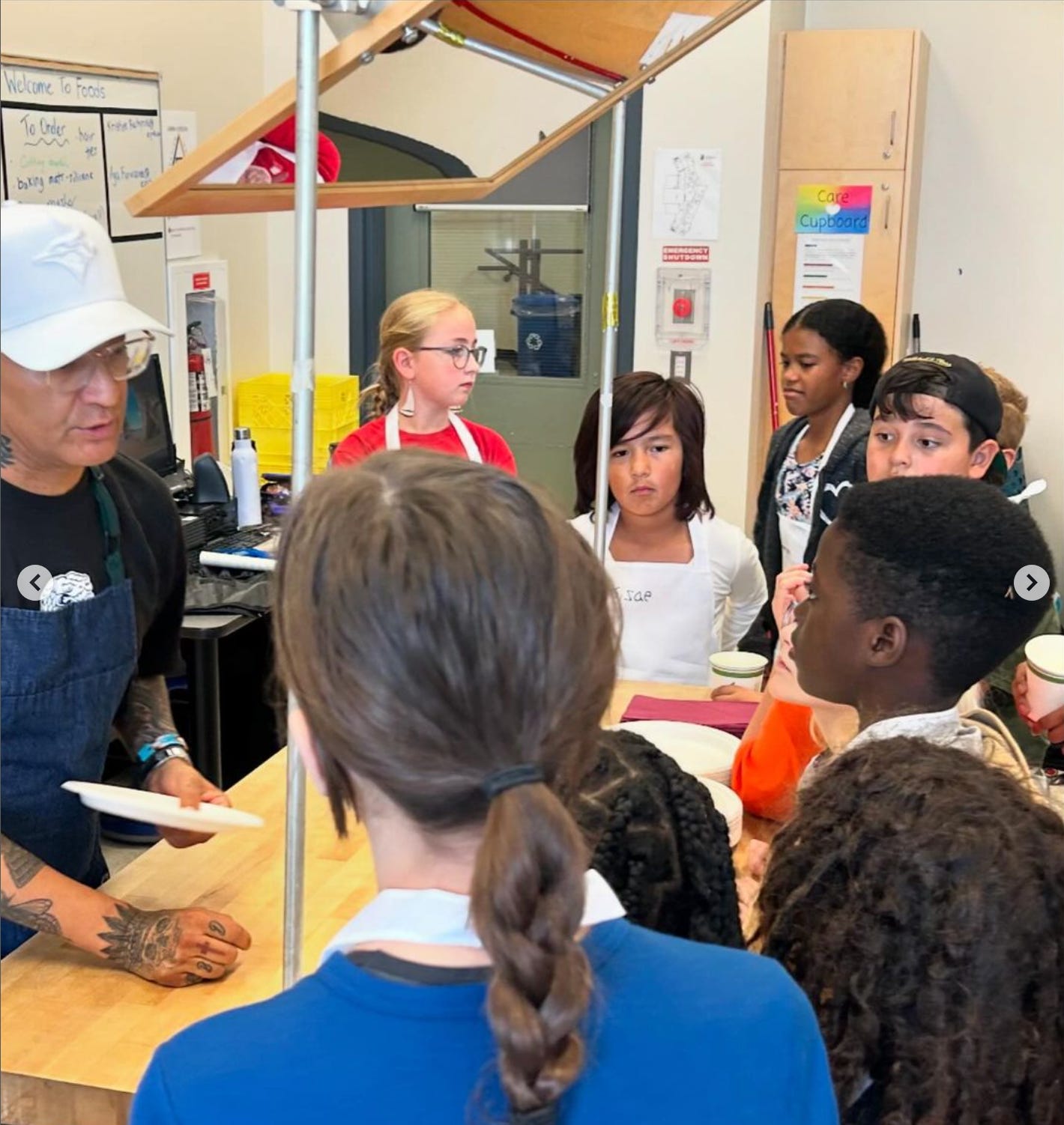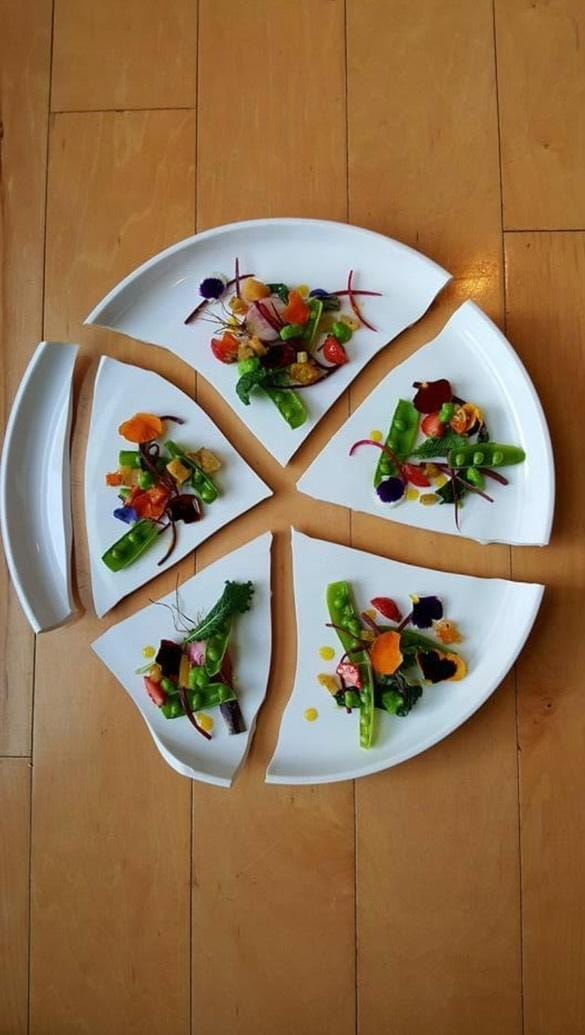Order Up! A Conversation with Celebrity Chef Shane Chartrand
Interview with Indigenous Chef, Cookbook Author, and Top Chef Canada Competitor honoring Native American Heritage Month
Welcome to Order Up! Our One Potato Interview Series, where we interview chefs, food writers, home cooks, and members of our community about cooking and food - highlighting and sharing the diversity in our world. In recognition of Native American Heritage Month, we spoke with Shane Chartrand, indigenous chef, about his journey to becoming a chef, cooking with Native ingredients, and teaching non-Native people about his culture. This interview is available for all subscribers.
One Potato is a reader-supported newsletter - paid subscribers have access to the full archive of Recipes and Specials Interviews and Community Voices for $5/month or $45/year. Thank you for your support!
Every November, the U.S. celebrates Native American Heritage Month to honor the rich cultures, histories, and contributions of Native American peoples. This month-long recognition was established in 1990 by President George H.W. Bush, but its roots go back to the early 1900s when leaders like Dr. Arthur C. Parker, a Seneca anthropologist, and Red Fox James began advocating for Indigenous representation. November was chosen for its connection to Native harvest traditions, making it a perfect time for reflection, learning, and celebrating Indigenous heritage.
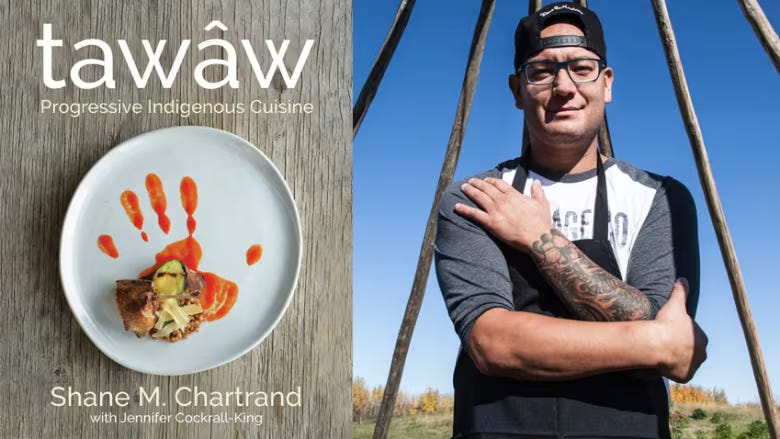
Chef Shane’s cookbook is titled, tawâw [pronounced ta-WOW]: Come in, you’re welcome, there’s room. A title that resonates deeply with us at One Potato, and speaking with him, his warmth for people and passion for food is infectious. It’s incredibly important to point out that there is no single Indigenous cuisine, as the cuisine of First Nations peoples varies greatly depending on the region and indigenous ingredients available - Chef Shane spent many years learning from and working with other First Nations peoples when writing his cookbook, and building his recipes. You know what else? He has always loved working with kids; he’s frequently invited into schools to teach cooking workshops. You can check out his cookbook and explore some recipes with your family yourself: tawâw: Progressive Indigenous Cuisine.
In our conversation, Chef Shane expressed how challenging it can be to reach across cultural divides, especially when non-Native individuals are afraid of doing or saying something wrong or offensive. He is happy to do his best to answer questions readers may have about Indigenous protocols1 so that we can all feel more comfortable talking to indigenous people. Be sure to follow Shane on Instagram at @shanemchartrand and watch him on Top Chef Canada Season 11!
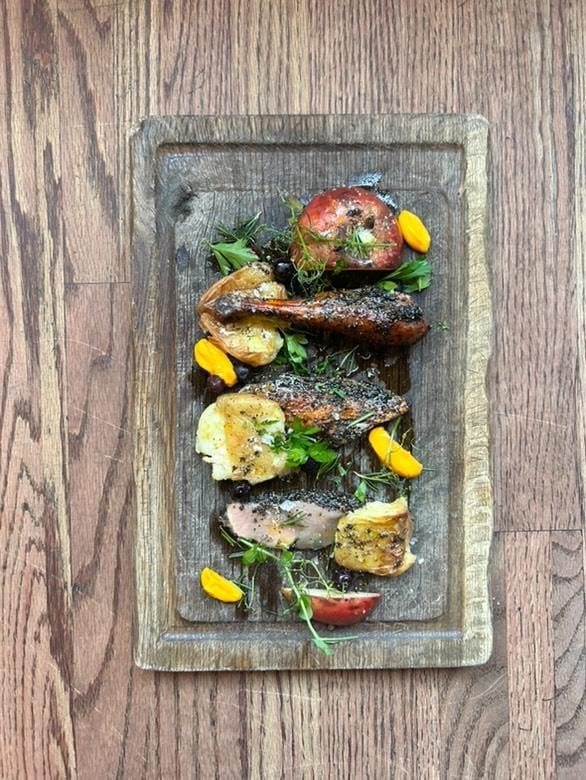
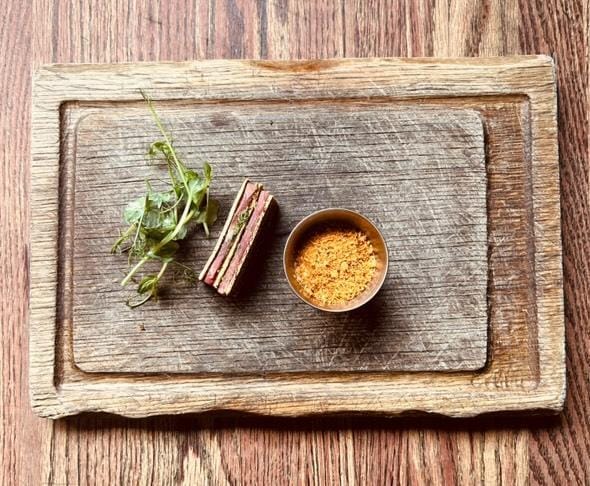
Thank you, Shane, for helping us build bridges through food and nourishment, by sharing your cooking stories, and creating a more open and inclusive world with us!
Introduce Yourself: My name is Shane Chartrand, and I’m the chef at OSFM - the Old Strathcona Market in Edmonton, AB, Canada. My new place is called Paperbirch - by Chartrand. You can find my cookbook, tawâw: Progressive Indigenous Cuisine, on Amazon.
At One Potato, we talk a lot about how food and cooking are ways in which traditions and culture are passed down through generations. If you could share one memory about cooking with your family, or preparing a favorite meal with your parents, or grandparents, what would it be?
I’m Cree, but I was adopted when I was young - my adopted father is Métis and my mother is Mi’kmaw-Irish. In general, my family’s kitchen was hectic - I once heard a saying that you don’t fall in love cooking together, get the heck out of my way! But maybe not everyone is like that in the kitchen. What I do remember, though, is that my dad would always make Métis bread for special occasions, especially holidays. This is a dense, flat, fried bread, sort of similar to a French galette. He still insists on making it, even though he’s getting older and it’s harder for him. Spending time together and connecting with family over food during the holidays, has always been important in my family.
When did you become passionate about cooking? Is there a story behind it? You describe yourself as an artist, creating dishes that tell a story and express your personality, so it truly comes across as self-expression, tell us more about that…
Ever since I was young, I knew I loved food. Not just eating it, but what food could do—how it could make people happy and bring them together. In my family, no one else had ever made a career out of cooking, but for me, it felt like the only option that really fit. So, I went to culinary school and later picked up an honorary degree in wine studies. I wanted to know everything about food and drink so I could create the best experiences possible.
Over time, I got into culinary competitions and even had some fun on TV. But, honestly, my motivation has always been pretty simple: I cook because I genuinely love food, and I love what it does for people. There's a word in my language—tapwe—that means “true” or “not made up.” What I’m telling you is completely true. This is just me being me, cooking is me being completely genuine.
What really drives me is the joy food brings to people. I get to see that instant gratitude—the “oh wow, you made our night with this meal!” or “you made our anniversary so special!” It’s the best feeling in the world.
One experience, early on, really sealed the deal for me. I was still pretty shy back then, but one night I stepped into the dining room and saw this young couple on what looked like their first date. They seemed a little nervous and weren’t ordering much, maybe because they couldn’t afford it. I decided to send a few dishes over, just as a little surprise. Watching them enjoy it, seeing the guy light up when his date smiled—it made me so happy to know that my food could be part of their night.
Right then, I thought, This is what I want to do forever. I want to make people feel like that every time they sit down to eat.
Along those same lines, you do incredible work in grade schools leading cooking classes for kids, teaching them about your culture and heritage. Do you have any words of wisdom to help parents inspire their kids (and kids themselves!) to get excited about cooking and learning about diverse cultures, especially through food?
I’ve always loved working with kids, especially teaching them how to cook. There's something amazing about showing them that they can make things like fresh pasta or mix up ingredients themselves—seeing their faces light up when they realize, "Hey, I made this!" I get to go into schools pretty often to cook with kids, and we keep things really hands-on.
One of the things I tell them right away is, "Don’t be afraid to get your hands dirty." Cooking is all about diving in, and this is true when you’re cooking at home, too - it’s actually more fun that way. By the end, we get to set up a big presentation, which the kids absolutely love. We lay out all the food on big wooden boards, adding leaves and pinecones for decoration. It’s a whole thing—playing, imagining, making food into something creative. Kids get so into it, and they start to see cooking as more than just following recipes.
I also spend some time teaching them a bit about Indigenous protocol, especially around communication. I want them, along with their teachers and adults who join in, to feel comfortable and open, so we talk about respectful language and how to ask questions in a way that’s thoughtful. I make it clear that this is a safe space to learn, and I’m happy to answer any questions they have.
Ok, here’s a question - what do you even mean when you say “Indigenous ingredients?”
I know everyone loves a good bison burger, and that’s a bit of a stereotype, but when it comes to Indigenous cuisine, I like to dig a lot deeper and bring in ingredients that people may not have even heard of. For example, I use reindeer moss—it’s fantastic as a crispy garnish on steak. Then there are bearberries, which add a unique tartness, and rat root, a super healthy vegetable root. Chaga, a type of mushroom, also makes its way into my recipes for a rich, earthy flavor. Each of these ingredients has a place in my cooking because they bring out something unique and connect us to the land in a special way.
I have always been one to dream big and dream strong, and to push beyond my own limits. I have a huge imagination when it comes to expressing myself through food and imagining new ways to use these incredible ingredients.
We love to give tips & tricks to our community of home cooks. What’s a chef-approved cooking skill you use all the time, that you think home cooks should practice/have under their belt:
Let me tell you, how you cut your veggies can totally change the way your salad tastes! If you’re not usually into salads, try playing around with your cuts—take carrots, for example. Cut them five different ways, and you'll see what I mean. Try ribbon cuts, julienned strips, or even give them a quick fry before adding them in. Each style brings out a different texture and flavor, which can make salads a lot more interesting.
It’s actually pretty fun to experiment—grab a carrot or any veggie, and practice slicing it up in different ways. You might surprise yourself with what a difference it makes!
Thank you for chatting with us, Shane! One Potato readers can follow you on Instagram at @shanechartrand and of course they can learn more about your on your website or get a copy of your cookbook.
What does the term indigenous protocols mean? We had to look this up, too, don’t worry! Simply, it refers to ways of interacting with Indigenous people in a manner that respects traditional ways of being, and they are deeply held protocols. These can vary from culture or community or region to another.





